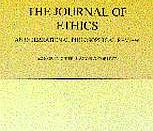Organizational behavior describes how people behave and affect the performance of the organization. By understanding organizational behavior and what causes people to behave as they do, organizations can achieve positive outcomes.
In the following paragraphs I will evaluate the following trends in organizational behavior. I will also explain how ethics influences our decision making and how technology impacts on work-related stress.
"Ethical or unethical business practices usually reflect the values, attitudes, beliefs and behavior patterns of the organizational culture; thus, ethics is as much an organizational as a personal issue" (Daft & Marcic, 2001, p.120). At Rabobank we have high ethical standards, integrity and loyalty. Rabobank has very low turn over and every employee is always trying their best and doing the right thing. Rabobank holds two office functions each year to build team camaraderie, and reinforce valued principles and accomplishments. Organizations are responsible for creating and sustaining conditions where employees are likely to behave themselves and in order to create and sustain a positive environment, organizations must provide employees with some tools like programs, trainings, code of ethics and leadership.
A leader must set an example of the organizations ethics through their own actions. "Leaders make a commitment to ethical values and help others throughout the organization embody and reflect those values" (Daft & Marcic, 2001, p.125). Another tool that will help organizations create a positive environment is the code of ethics. Most companies have a code of ethics which is a statement of an organization values concerning ethics. This statement communicates to employees what the company stands for and what behaviors are expected from employees and also the behaviors that are not tolerated.
In addition, "research has shown that the values of an organization or department strongly influence employee behavior and decision making" (Daft & Marcic,


